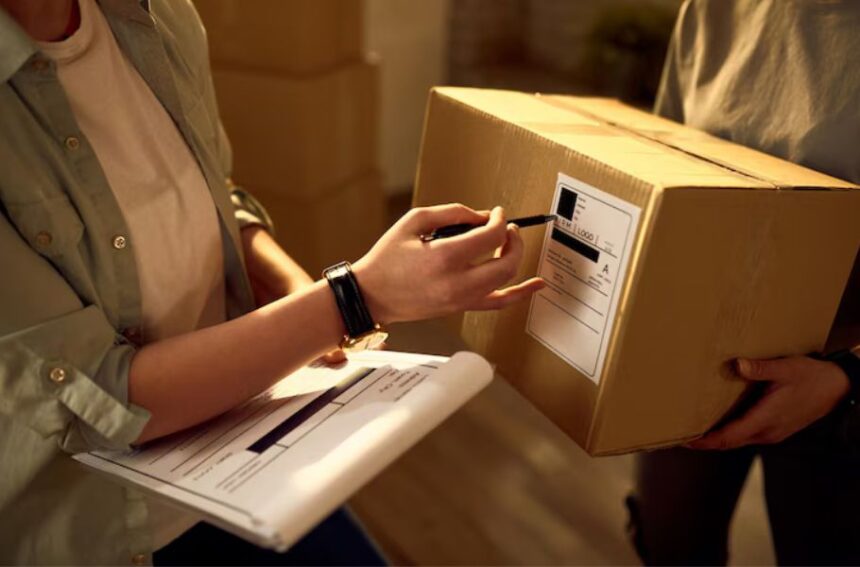A Cargo Clearance Permit (CCP) is an essential document issued by a customs authority that authorizes the movement, entry, or exit of goods across international borders. This permit serves as proof that all necessary checks, duties, and regulatory requirements have been met and that the cargo complies with the destination country’s legal and safety standards.
Importance of Cargo Clearance Permit in International Trade
In the vast landscape of international trade, the cargo clearance permit plays a vital role. It acts as a checkpoint to:
- Ensure compliance with import/export laws
- Facilitate smooth customs processing
- Prevent smuggling and illegal shipments
- Protect domestic markets and consumers
- Enhance traceability and accountability of goods
Without a valid clearance permit, cargo can be delayed, held at the border, or even confiscated.
Key Components of a Cargo Clearance Permit
Understanding the core elements of a cargo clearance permit is crucial for businesses involved in cross-border trade. Below are the 8 key components that typically make up a comprehensive Cargo Clearance Permit (CCP):
Shipper and Consignee Information
Details such as name, address, and tax identification numbers are recorded. These help authorities trace the origin and destination of goods.
Description of Goods
This includes the nature of the cargo, quantity, value, Harmonized System (HS) codes, and any other specifications required for classification and duty calculation.
Customs Declaration Number
Each shipment is assigned a unique declaration number which ties into the national or international customs database.
Permit Number and Validity
A CCP comes with a unique identification number and has a validity period during which the cargo must be cleared.
Associated Fees and Duties
Permits are typically not issued without the payment of associated customs duties, taxes, and administrative charges.
The Cargo Clearance Process Explained
Understanding how cargo clearance works is essential for avoiding costly delays and ensuring legal compliance. Below are the 5 fundamental steps in the cargo clearance process:
Submission of Documentation
Importers or exporters must submit necessary documents to customs authorities. These typically include:
- Bill of Lading
- Commercial Invoice
- Packing List
- Certificate of Origin
- Import/Export License
Customs Review and Assessment
Customs officers review the submitted documents to ensure compliance. They may also assess the risk level of the shipment.
Payment of Duties and Taxes
Once assessed, the relevant customs duties, VAT, and other fees must be paid to initiate the clearance process.
Inspection and Verification
If deemed necessary, physical inspection of goods is carried out to verify documentation accuracy and check for prohibited or restricted items.
Issuance of Cargo Clearance Permit
After all conditions are met, the customs authority issues the CCP, allowing the goods to be legally moved or received.
Types of Cargo Clearance Permits
Cargo Clearance Permits are not one-size-fits-all. Depending on the nature of the shipment, its route, and the purpose of transport, different types of permits are required. Below are the three primary types of cargo clearance permits used in global trade:
Import Clearance Permit
Required for goods entering a country. Ensures that imports meet safety, quality, and legal standards.
Export Clearance Permit
Issued for goods leaving a country. Often needed to comply with trade agreements and to ensure that exports do not violate domestic laws.
Transit Clearance Permit
Used when goods pass through one or more countries before reaching the final destination. Ensures cargo does not violate laws of transit countries.
Documents Required for Obtaining a Cargo Clearance Permit
Standard Documentation:
- Import/Export License
- Tax Identification Number (TIN)
- Certificate of Origin
- Commercial Invoice
- Freight Invoice
- Packing List
Country-Specific Requirements
Each country may have additional requirements, such as:
- Quarantine certificates
- Sanitary and phytosanitary permits
- Security certifications
- Product-specific compliance certificates
Common Challenges in Cargo Clearance
Cargo clearance is a critical process in international trade, but it can be riddled with challenges that can delay shipments, increase costs, or even lead to legal issues. Below are some of the most common challenges faced during the cargo clearance process:
Documentation Errors
Incorrect or incomplete documents are among the top reasons for permit delays or denials.
Misclassification of Goods
Wrong HS codes can lead to overpayment or legal trouble. Proper classification is crucial.
Non-Compliance with Regulations
Each country has unique import/export regulations. Failing to comply can result in penalties.
Customs Delays
Delays in customs inspection or review can stall the issuance of permits.
High Tariff and Duty Costs
Certain goods attract high tariffs, increasing the overall cost and complicating the clearance process.
How to Streamline the Cargo Clearance Permit Process
Brokers are well-versed in clearance requirements and can help navigate complex regulatory environments.
Leverage Digital Platforms
Many countries offer e-clearance systems to speed up document submissions and approvals.
Maintain Accurate Records
Keeping detailed and accurate shipping records can expedite the approval process and reduce errors.
Pre-clearance Options
Some jurisdictions allow for pre-clearance of goods, minimizing border delays.
Training and Awareness
Keeping staff informed about the latest customs requirements and compliance procedures can prevent costly mistakes.
Role of Technology in Cargo Clearance
Technology plays an increasingly critical role in the cargo clearance process, transforming how shipments are processed, monitored, and managed. The integration of technology streamlines customs procedures, reduces human error, improves efficiency, and ensures compliance with regulations. Here are some key technological advancements that are shaping the cargo clearance landscape:
EDI (Electronic Data Interchange)
Enables fast and secure exchange of documents between traders and customs authorities.
Blockchain Technology
Improves transparency, traceability, and reduces fraud by providing immutable shipment records.
Automated Risk Assessment Tools
Help customs authorities quickly assess which shipments need inspection, reducing unnecessary delays.
Legal and Regulatory Framework
International Conventions
- World Customs Organization (WCO) guidelines
- WTO Trade Facilitation Agreement
National Laws
Every country has its customs act and trade regulations that dictate the terms of cargo clearance.
Penalties for Non-Compliance
Violations can lead to heavy fines, shipment seizures, or blacklisting of importers/exporters.
Conclusion
The cargo clearance permit is a critical part of international trade and logistics. It ensures that goods crossing borders meet the legal, safety, and regulatory requirements of the importing or exporting country. With globalization intensifying, businesses must streamline their clearance processes, stay compliant with changing regulations, and leverage technology to avoid costly delays. By understanding and managing the cargo clearance permit process efficiently, traders can enjoy faster delivery times, improved reliability, and stronger international relationships.



